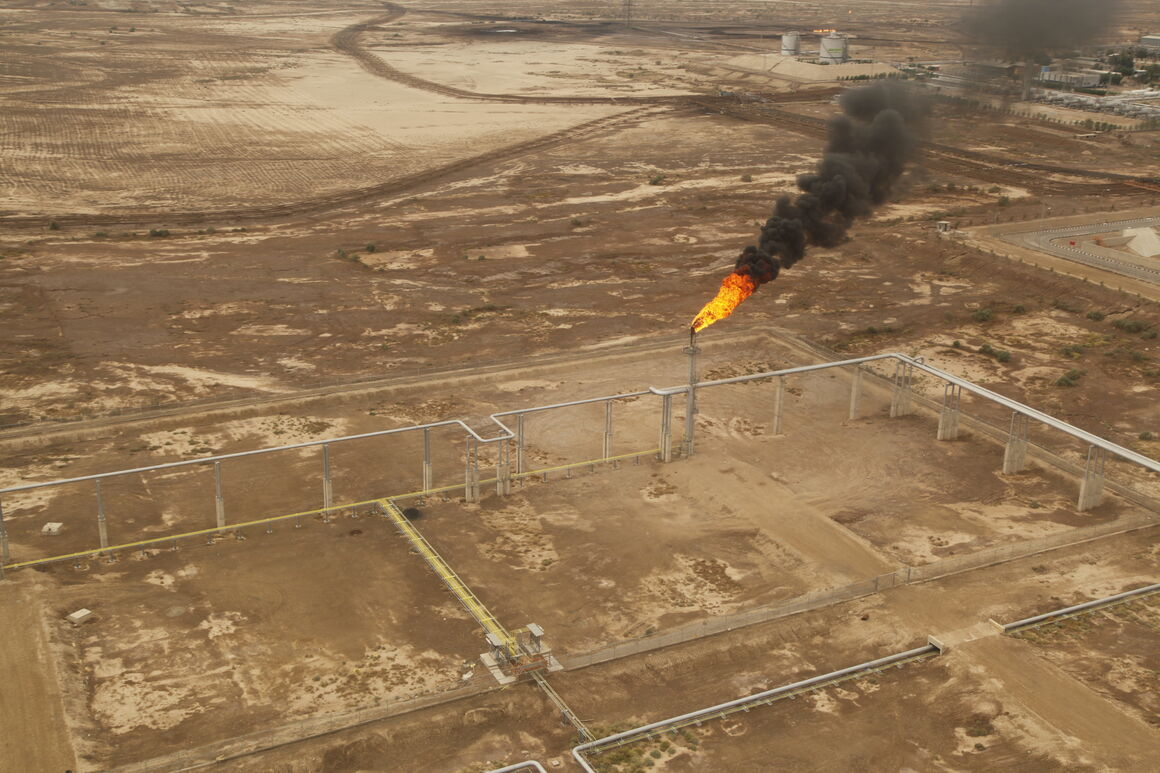Thanks to existing technologies, it would be possible to raise oil recovery rate from different reservoirs to over 80%.
One of reservoirs that Iran has specifically counted on is Bangestan in the Mansouri oil field.
According to NIOC Directorate of Corporate Planning, various scenarios envisaged for enhanced recovery from this field include natural depletion, gas injection and water injection with a view to studying various parameters including output flow and downhole pressure.
This field enjoys very good potential for production and development. More studies are needed in the future to study the Bangestan reservoir of Mansouri field. These studies focus on artificial lifting, hydraulic fracturing and enhanced oil recovery (EOR) methods.
Iran’s petroleum industry and particularly National Iranian South Oil Company (NISOC), over recent years, has focused on the development of Mansouri in order to increase its crude oil output and enhance its processing capacity. The project is 97.5% complete now. The only remaining section from phase 1 of Mansouri field development is the completion of production and desalination plant.
The high rate of recovery from Mansouri has added to the significance of this field. The latest studies indicate that the average rate of recovery from oil fields in Iran is about 28%, while the Asmari reservoir of Mansouri has a recovery rate of 47%, which is indicative of the high potential of this oil field.
The Mansouri field is located 60 kilometers south of Ahvaz (the provincial capital of Khuzestan), 50 kilometers west of Mahshahr Port and 40 kilometers east of Ab Teimour field. Discovered in 1963, Mansouri field started production in 1973.
The first well in the Mansouri field was drilled in 1963 to allow for oil recovery from the Asmari reservoir. Oil production from the Bangestan reservoir began in 1974 after drilling Well No. 2.
After the establishment of Mansouri production unit in 1979, the processing of the Bangestan oil was transferred from the Ahvaz production unit to the Mansouri production unit.
Mansouri field is administered by Karoun Oil and Gas Production Company that is the largest NISOC subsidiary with an output of over 1 mb/d.
Bangestan reservoir has a production unit with a rated capacity of 75,000 b/d, a desalination unit with a rated capacity of 35,000 b/d and a gas compressor unit with a rated capacity of 30,000 b/d.
Bangestan is estimated to hold 15 billion barrels of oil in place with an output of 60,000 b/d that may be increased to 79,000 b/d. So far, 347 million barrels of oil has been extracted from Bangestan reservoir.
The average production from each onshore oil well has fallen to 2,000 b/d, down from 26,000 b/d recorded between 1970 and 1972. There were a total of 270 wells when Iran was supplying its maximum oil output. There are currently over 1,500 oil wells.
According to official data, the average oil production rate in Iran stands at 24%, while in many countries it varies between 45% and 65%.
Iranian Petroleum Ministry officials say the average recovery rate from oil fields in Iran stands at around 24%, ranging from 7% in Soroosh oil field to 35% in Ahvaz oil field.
In the 1940s, the average production from Iranian oil wells was said to stand at 18,000 b/d. After so many years, the figure is down to 2,000 b/d.
Output Hike Possible at Salman
Salman oil field located in the Persian Gulf is jointly owned by Iran and the United Arab Emirates (UAE). The offshore shared field has high-pressure gas layers, too. Discovered about 45 years ago, Salman field has since been supplying oil.
It is located in Hormuzgan Province and more specifically 144 kilometers south of Lavan Island.
Due to the existence of about 70% of oil and gas layers of this oilfield in Iran’s territorial waters and its shared status, its development has always been a priority for Iran’s petroleum industry.
Given the history of oil production in Salman field, it seems that the main objective of Iran’s petroleum industry in such ageing fields as Salman has been to apply cutting edge technology for maximum efficient recovery and enhancing the rate of recovery from these fields.
Salman contains light crude oil with API gravity varying between 33 and 37. Renewed development of the Salman field allows for enhanced output. If enhanced oil recovery (EOR) methods are applied, a much higher output is envisioned.
Salman field incorporates an asymmetric anticline measuring 14 kilometers long and 11 kilometers wide. Geologically, it is composed of three oil production layers dating from the Jurassic and Cretaceous eras. Salman field also incorporates a gas layer.
According to the latest data, Salman field has 44 oil and 10 gas wells. Based on studies currently under way, gas production from Salman could rise after making some arrangements.
The field is owned 67% by Iran and 33% by the UAE. There is not accurate figure about gas production from Salman whose rate of recovery stands at 51%.
The oil extracted from Salman field is carried to Lavan Island via a subsea pipeline of 22 inches in diameter for final processing on onshore facilities and then exported or stored to feed Lavan refining facility.
Despite being ageing, Salman still has an acceptable level of deposits. Timely development of this field would boost its output. Five platforms are currently operating in this field.
Among the three reservoirs in Salman, the one located at a depth of 10,000 meters under seabed accounts for 70% of the Salman output. A layer located at a depth of 8,000 feet accounts for 20% of Salman output and a third layer at a depth of 5,000 feet for 10%.
Courtesy of Iran Petroleum


Your Comment